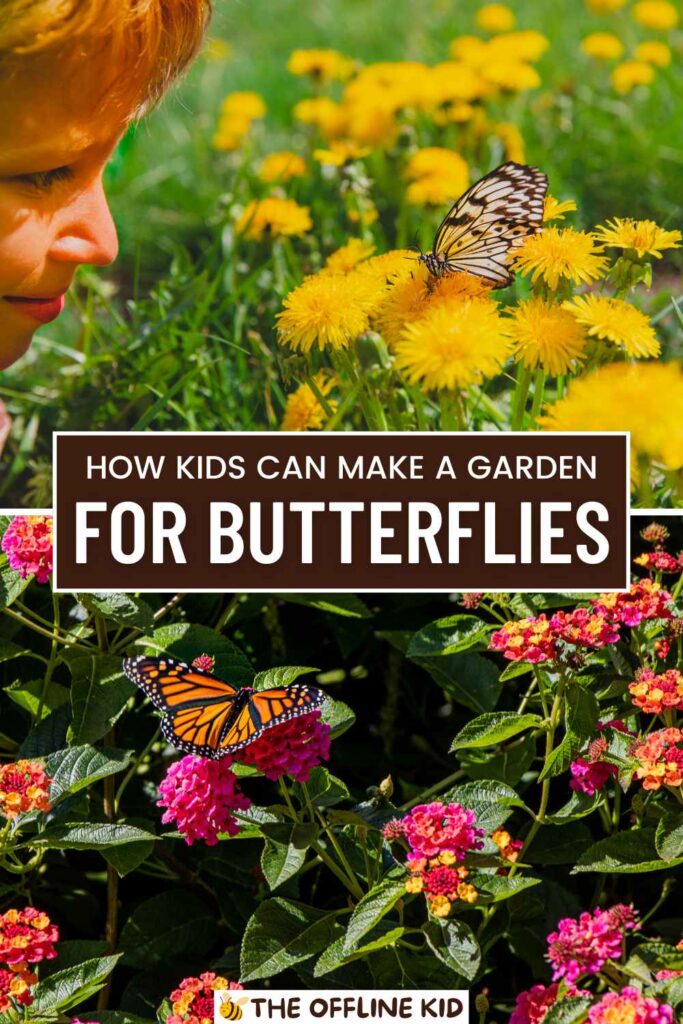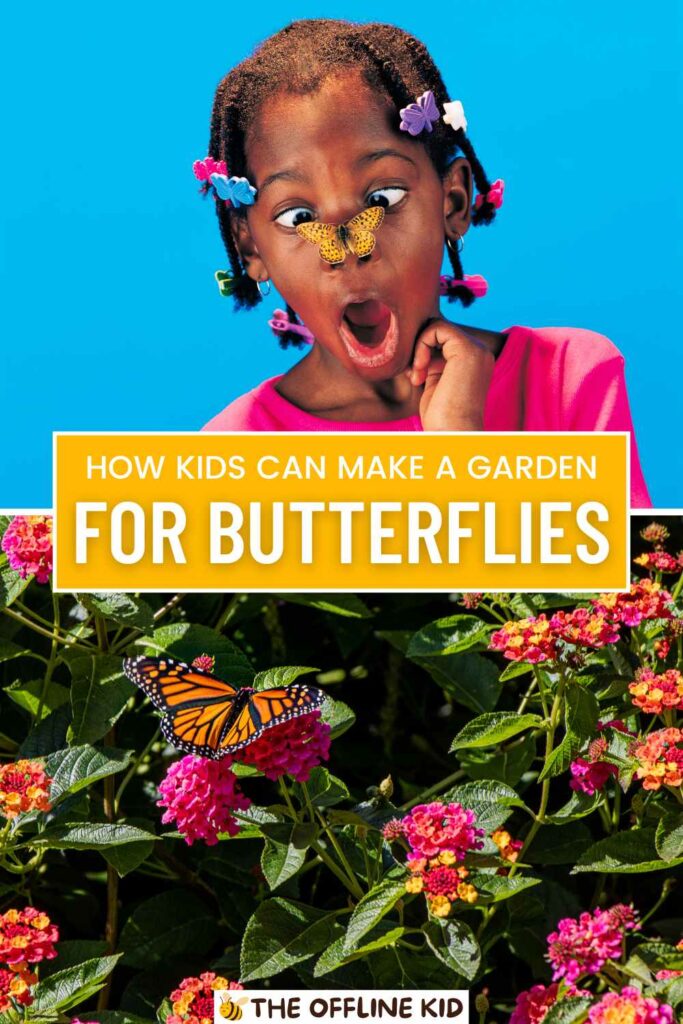Welcome to the ultimate guide for creating a butterfly garden with kids!
Discover the joy and educational benefits of nurturing a butterfly haven right in your backyard.
Understanding Butterfly Gardens
What is a Butterfly Garden?
A butterfly garden is a specially designed garden that attracts and supports butterflies through the provision of appropriate plants and habitat features.
These gardens create a safe space for butterflies to feed, breed, and rest.
The Importance of Butterfly Gardens for the Ecosystem
Butterfly gardens are vital for the environment. They help:
- Promote Biodiversity: By providing habitat for butterflies, we support a wide range of other pollinators and beneficial insects.
- Pollinate Plants: Butterflies play a crucial role in pollinating flowers, which is essential for plant reproduction.
- Serve as an Educational Tool: They offer hands-on learning opportunities about ecosystems, life cycles, and environmental stewardship.
Educational Benefits for Children
Creating a butterfly garden with kids offers numerous educational benefits:
- Understanding Life Cycles: Observing the transformation from caterpillar to butterfly helps children grasp the concept of life cycles.
- Science Skills: Kids can learn about botany, entomology, and ecology through interactive and practical experiences.
- Responsibility and Patience: Gardening teaches children responsibility as they care for plants and monitor the butterflies’ progress.
- Creativity and Problem-Solving: Designing and maintaining the garden encourages creativity and problem-solving skills.
By the end of this guide, you’ll have all the knowledge and inspiration needed to create a beautiful, thriving butterfly garden with your kids. Let’s get started!
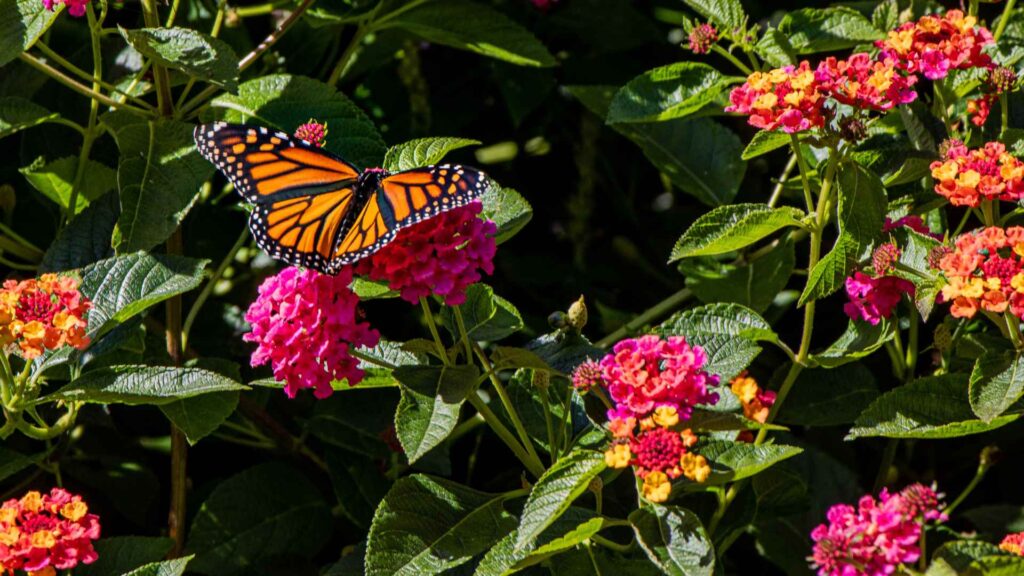
Planning Your Butterfly Garden
Choosing the Right Location
Selecting the perfect spot for your butterfly garden is crucial for its success. Here are some key considerations:
- Sunlight and Shade Requirements: Butterflies thrive in sunny locations. Choose an area that receives at least 6 hours of sunlight per day. Ensure there are some shaded spots where butterflies can rest during the hottest parts of the day.
- Proximity to Water Sources: Butterflies need water to drink and puddle in. Locate your garden near a water source or plan to include small water features.
- Protection from Wind: Windy areas can deter butterflies. Select a sheltered spot or create windbreaks with bushes or structures.
Size Considerations
Your garden doesn’t need to be large to attract butterflies. Here are some tips to determine the appropriate size:
- Small Spaces: Even a few square feet can support a butterfly-friendly environment. Consider container gardening if space is limited.
- Larger Gardens: For more extensive projects, you can create a diverse habitat with various plants and features. Ensure pathways are kid-friendly and accessible.
Planning the Layout
Designing the layout is an exciting step. Involve your kids in the process to spark their interest and creativity.
- Create Zones: Divide the garden into sections for different plant types (nectar plants, host plants) and features (water sources, resting spots).
- Pathways and Access: Plan easy-to-navigate paths for kids to explore the garden without disturbing the plants.
- Height Variations: Plant taller plants at the back and shorter ones in front to create a layered effect and make it easier for butterflies to find their favorite plants.
Involving Kids in the Planning Process
Engaging your children in the planning stages makes the project more enjoyable and educational for them.
- Draw a Garden Plan: Use graph paper or online tools to sketch the garden layout. Let your kids contribute ideas and draw their vision.
- Select Plants Together: Research and choose plants that attract butterflies. Visit a nursery or use online resources to pick out the best options.
- Discuss Garden Themes: Consider themed gardens, such as a fairy garden or a rainbow garden, to make the project more appealing to kids.
By carefully planning your butterfly garden’s location, size, and layout, and involving your kids in these decisions, you’ll set a strong foundation for a successful and enjoyable gardening experience.
Selecting Plants for Your Butterfly Garden
Native vs. Non-Native Plants
Choosing the right plants is crucial for attracting and supporting butterflies. Here’s why native plants are often the best choice:
- Adaptation: Native plants are well-suited to your local climate and soil conditions, requiring less maintenance and water.
- Butterfly Preferences: Local butterflies are more likely to recognize and use native plants for nectar and as host plants for their larvae.
However, non-native plants can also be beneficial if they are not invasive and provide essential resources for butterflies.
Host Plants for Caterpillars
Host plants are those on which butterflies lay their eggs and caterpillars feed. Here are some common host plants for different butterfly species:
- Monarch Butterflies: Milkweed (Asclepias spp.)
- Black Swallowtails: Parsley, dill, fennel, and carrots
- Painted Ladies: Thistle, hollyhock, and mallow
Planting and Care Tips for Host Plants:
- Plant in clusters to make it easier for butterflies to find them.
- Ensure the plants are healthy and pesticide-free.
- Educate your kids about the importance of these plants and their role in the butterfly life cycle.
Nectar Plants for Butterflies
Nectar plants provide the essential food source for adult butterflies. Some popular choices include:
- Butterfly Bush (Buddleja spp.)
- Coneflowers (Echinacea spp.)
- Lantana
- Marigolds (Tagetes spp.)
Planting and Maintenance Tips for Nectar Plants:
- Choose a variety of plants that bloom at different times to provide a continuous nectar source.
- Deadhead spent flowers to encourage more blooms.
- Group plants together to create a more appealing and accessible nectar source for butterflies.
Seasonal Plant Selection for Year-Round Attraction
To keep your garden attractive to butterflies throughout the year, select plants that bloom in different seasons:
- Spring: Lilacs, pansies, and snapdragons
- Summer: Zinnias, sunflowers, and lavender
- Fall: Asters, sedum, and goldenrod
- Winter: In mild climates, consider planting winter-blooming species like heather and witch hazel
Tips for Seasonal Planting:
- Plan your planting schedule to ensure there’s always something in bloom.
- Use a mix of perennials and annuals to provide both long-term structure and seasonal color.
- Involve your kids in planting seasonal flowers to teach them about the changing seasons and plant life cycles.
By carefully selecting a mix of native and non-native plants, including essential host and nectar plants, and planning for seasonal blooms, you’ll create a thriving butterfly garden that provides year-round enjoyment and learning opportunities for your kids.
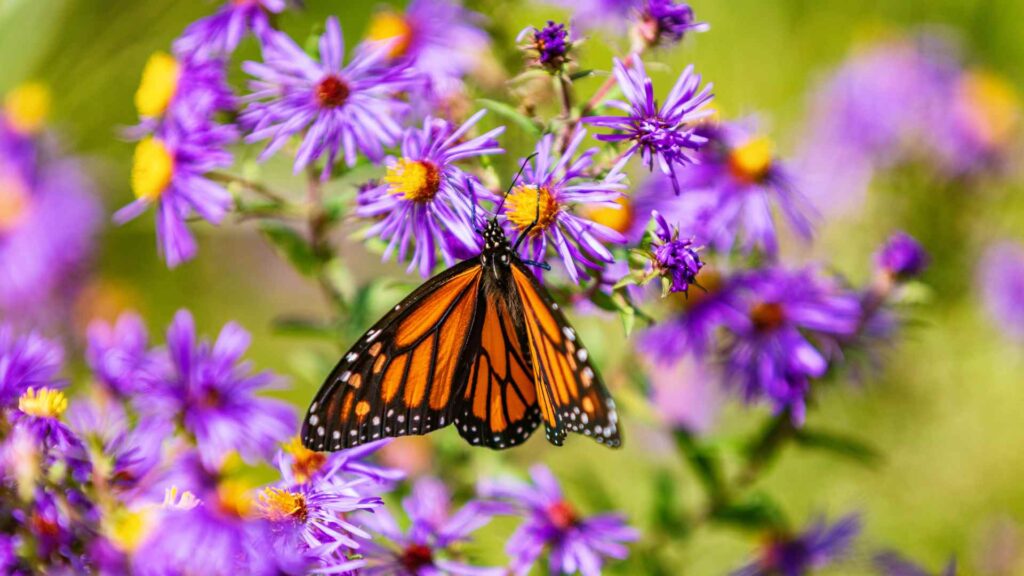
Preparing the Soil
Soil Testing and Preparation
Before planting, it’s important to ensure your soil is suitable for a butterfly garden. Here’s how to get started:
- Soil Testing: Use a soil test kit or send a sample to a local extension service to determine the soil’s pH and nutrient levels.
- Improving Soil Quality: Based on the test results, amend the soil with organic matter such as compost or well-rotted manure to improve fertility and structure.
Steps for Soil Preparation:
- Clear the Area: Remove any weeds, rocks, and debris from the garden area.
- Loosen the Soil: Use a garden fork or tiller to loosen the soil to a depth of about 12 inches.
- Add Amendments: Mix in organic matter and any necessary soil amendments to improve soil health.
Organic vs. Non-Organic Soil
Choosing between organic and non-organic soil can impact the health of your garden and its butterfly inhabitants:
- Organic Soil: Enriched with natural materials, organic soil supports a healthy ecosystem and promotes beneficial insects.
- Non-Organic Soil: Often contains synthetic fertilizers and pesticides, which can harm butterflies and other pollinators.
Why Choose Organic Soil?
- Healthier Plants: Organic soil improves plant health and resilience.
- Environmental Benefits: It’s better for the environment, reducing chemical runoff and supporting biodiversity.
- Safer for Kids: Organic gardening is safer for children who will be handling the soil and plants.
Composting Basics with Kids
Composting is a fantastic way to enrich your soil naturally while teaching kids about recycling and decomposition.
How to Start Composting:
- Choose a Compost Bin: Select a compost bin or create a simple compost pile in a corner of your garden.
- Gather Materials: Collect kitchen scraps (fruit and vegetable peels, coffee grounds), garden waste (grass clippings, leaves), and avoid meat, dairy, and oily foods.
- Layering: Teach kids to layer green (nitrogen-rich) and brown (carbon-rich) materials to balance the compost.
- Aerate: Turn the compost regularly to speed up the decomposition process.
- Use: Once the compost is dark and crumbly, mix it into your garden soil.
Composting Tips for Kids:
- Compost Creatures: Look for worms and other decomposers in the compost pile.
- Science Lessons: Discuss how composting works and the importance of reducing waste.
Mulching Techniques
Mulching helps retain moisture, suppress weeds, and improve soil health. Here’s how to do it effectively:
- Choose the Right Mulch: Organic mulches (like shredded bark, straw, or leaves) break down over time, adding nutrients to the soil.
- Apply Mulch Properly: Spread a 2-3 inch layer of mulch around your plants, keeping it a few inches away from the plant stems to prevent rot.
- Replenish as Needed: Add more mulch as it decomposes to maintain its benefits.
Benefits of Mulching:
- Water Conservation: Mulch helps retain soil moisture, reducing the need for frequent watering.
- Weed Control: It suppresses weed growth, making garden maintenance easier.
- Soil Health: As it breaks down, mulch enriches the soil with organic matter.
By properly preparing your soil, choosing organic methods, and involving kids in composting and mulching, you’ll create a healthy, fertile environment for your butterfly garden.
This sets the stage for vibrant plants and happy butterflies, while providing valuable learning experiences for your children.
Planting Your Butterfly Garden
Step-by-Step Planting Guide
Planting your butterfly garden is a hands-on, rewarding activity that you can enjoy with your kids. Here’s a step-by-step guide to get you started:
- Plan Your Planting Day: Choose a day with mild weather to make the process enjoyable and safe for everyone involved.
- Gather Supplies: Make sure you have all necessary tools, including trowels, gloves, watering cans, and garden markers.
- Prepare the Soil: Ensure the soil is loose and enriched with compost or other organic matter.
- Layout the Plants: Arrange your plants on the soil surface according to your garden plan, ensuring proper spacing.
- Dig Holes: Dig holes slightly larger than the root ball of each plant.
- Planting: Place each plant in its hole, backfill with soil, and gently firm it down.
- Watering: Water the plants thoroughly after planting to help them settle in.
- Mulching: Apply a layer of mulch around the plants to retain moisture and suppress weeds.
Tips for Involving Kids:
- Let them help with digging holes and placing plants.
- Use child-sized gardening tools to make the process easier and more fun.
- Encourage them to name the plants or label them with creative markers.
Involving Kids in Planting Activities
Getting kids involved in the planting process makes the experience more meaningful and educational. Here are some engaging activities:
- Planting “Butterfly Banquets”: Explain how each plant serves as a food source for butterflies and let kids help plant them in designated areas.
- Creating Plant Labels: Use popsicle sticks or stones to create plant labels. Let kids decorate and write the plant names on them.
- Tracking Growth: Keep a garden journal where kids can record the growth of each plant, noting when they see the first butterflies visit.
Watering and Fertilizing Tips
Proper watering and fertilizing are crucial for the health of your butterfly garden. Here’s how to do it right:
- Watering:
- Frequency: Water new plants regularly until they establish. Aim for about 1 inch of water per week.
- Method: Water deeply to encourage strong root growth. Use a watering can or hose with a gentle spray.
- Time of Day: Water in the early morning or late afternoon to minimize evaporation and prevent disease.
- Fertilizing:
- Organic Options: Use organic fertilizers like compost, fish emulsion, or seaweed extract to nourish your plants without harming butterflies.
- Frequency: Fertilize during the growing season, typically every 4-6 weeks, following the specific needs of your plants.
Watering Tips for Kids:
- Let them use a small watering can to water the plants.
- Teach them the importance of watering the roots, not the leaves, to prevent disease.
Using Garden Markers and Labels
Garden markers and labels are not only practical but also add a fun, decorative element to your butterfly garden.
- DIY Markers: Create your own markers using materials like painted rocks, popsicle sticks, or old spoons.
- Labeling Plants: Write the plant names and any special instructions on the markers.
- Educational Aspect: Use labels to teach kids about different plant species and their roles in the garden.
Crafting Tips for Kids:
- Provide paint, markers, and stickers for decorating the labels.
- Encourage creativity and let them personalize each marker.
By following these steps and involving your kids in planting, watering, and labeling activities, you’ll create a vibrant, well-maintained butterfly garden.
This hands-on approach not only enhances their gardening skills but also fosters a deeper connection with nature and a sense of accomplishment.
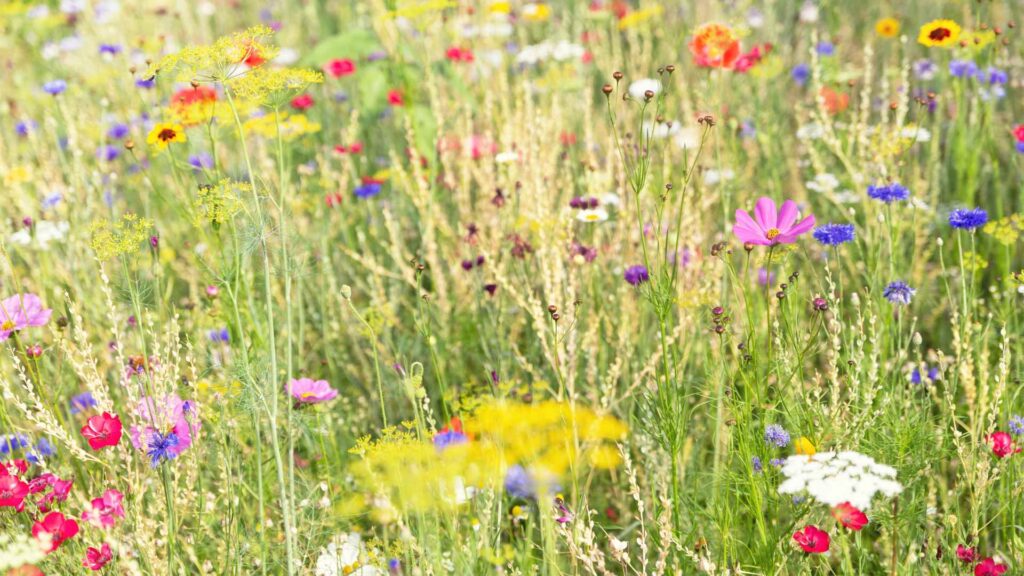
Creating Butterfly-Friendly Features
Adding Water Sources
Butterflies need water not just for drinking but also for mineral intake. Creating water sources in your garden is easy and can be a fun project for kids.
- Birdbaths: A shallow birdbath can double as a butterfly water source. Ensure it has gently sloping sides or add stones for butterflies to land on.
- Puddling Stations: Create puddling stations where butterflies can drink and absorb minerals. Use a shallow dish filled with sand or gravel, then add water to keep it moist. Add a few rocks or twigs for perches.
- Water Dishes: Use shallow dishes or saucers filled with water and place them around the garden. Add sponges or stones so butterflies have a safe landing place.
Tips for Involving Kids:
- Let them choose and decorate the containers.
- Teach them to check and refill the water sources regularly.
Shelter and Resting Places
Butterflies need shelter from the elements and safe places to rest. Here’s how to create these features in your garden:
- Butterfly Houses: Purchase or build butterfly houses. These structures provide shelter from rain and predators. Place them in a quiet, shaded part of the garden.
- Natural Shelters: Plant dense shrubs or tall grasses that can offer protection and resting spots for butterflies.
- Resting Rocks: Place flat stones in sunny spots. Butterflies enjoy basking in the sun to regulate their body temperature.
DIY Projects with Kids:
- Build a butterfly house from a kit or using simple materials like wood and nails.
- Create a “butterfly hotel” by bundling hollow stems or twigs and hanging them in the garden.
Decorative Elements
Adding decorative elements not only makes your garden more attractive but can also enhance its functionality for butterflies.
- Wind Chimes and Mobiles: Hang colorful wind chimes or mobiles. The gentle sounds and movements can attract butterflies.
- Colorful Plant Pots: Use bright, butterfly-attracting colors for plant pots. Let kids paint and decorate the pots to add a personal touch.
- Butterfly Feeders: Make butterfly feeders using sponges soaked in a sugar-water solution. Hang them from branches or place them on stakes.
Fun Craft Ideas for Kids:
- Painted Rocks: Collect rocks and paint them with butterfly motifs. Scatter them around the garden.
- DIY Mobiles: Create mobiles using beads, feathers, and other colorful materials.
By incorporating water sources, shelters, and decorative elements, you’ll create a welcoming and functional environment for butterflies.
These projects provide excellent opportunities for kids to engage creatively and learn about the needs of butterflies, making your garden a beautiful and educational space for the whole family to enjoy.
Observing and Enjoying Your Butterfly Garden
Identifying Common Butterflies
One of the most exciting parts of having a butterfly garden is spotting and identifying different butterfly species. Here are some common butterflies you might see:
- Monarch (Danaus plexippus): Known for their vibrant orange wings with black and white spots.
- Swallowtail (Papilio spp.): Recognizable by their large size and tail-like extensions on their hindwings.
- Painted Lady (Vanessa cardui): Orange and brown with intricate patterns.
- Red Admiral (Vanessa atalanta): Black with red bands and white spots.
Tools for Identification:
- Field Guides: Use butterfly field guides specific to your region.
- Apps: Download butterfly identification apps like iNaturalist or Seek.
- Binoculars: Invest in a pair of close-focus binoculars for detailed observation.
Keeping a Butterfly Observation Journal
Encourage your kids to keep a butterfly observation journal. This activity enhances their learning and makes the experience more memorable.
- What to Record:
- Date and time of sightings
- Weather conditions
- Butterfly species observed
- Behavior (feeding, resting, laying eggs)
- Sketches or photos
Journal Ideas:
- Templates: Create simple templates for kids to fill in with their observations.
- Creative Touches: Let kids decorate their journals with stickers, drawings, and pressed flowers.
Butterfly Life Cycle and Educational Activities
Observing the butterfly life cycle in your garden offers a fantastic educational experience.
- Stages of the Life Cycle:
- Egg: Usually laid on the underside of leaves.
- Caterpillar (Larva): Feeds on host plants.
- Chrysalis (Pupa): Transformation stage.
- Adult Butterfly: Emerges and begins the cycle anew.
Educational Activities:
- Egg Hunt: Search for butterfly eggs on host plants.
- Caterpillar Care: Gently collect a few caterpillars and observe them in a butterfly habitat or jar until they form chrysalises.
- Release Day: Once butterflies emerge, release them back into the garden and watch them take their first flight.
Photography Tips for Kids
Capturing the beauty of butterflies is a fun way to document their presence in your garden.
- Basic Tips:
- Patience: Wait for butterflies to land and stay still.
- Close-Ups: Use the macro setting on your camera or phone to get close-up shots.
- Natural Light: Photograph butterflies in natural light for the best results.
Kid-Friendly Photography Projects:
- Photo Journal: Create a photo journal with printed pictures and notes about each butterfly.
- Collages: Make collages or scrapbooks with butterfly photos and other garden elements.
By observing, journaling, learning about the butterfly life cycle, and capturing photographs, you and your kids can deepen your appreciation and understanding of these beautiful creatures.
These activities not only enrich your butterfly garden experience but also provide lasting memories and valuable educational opportunities.
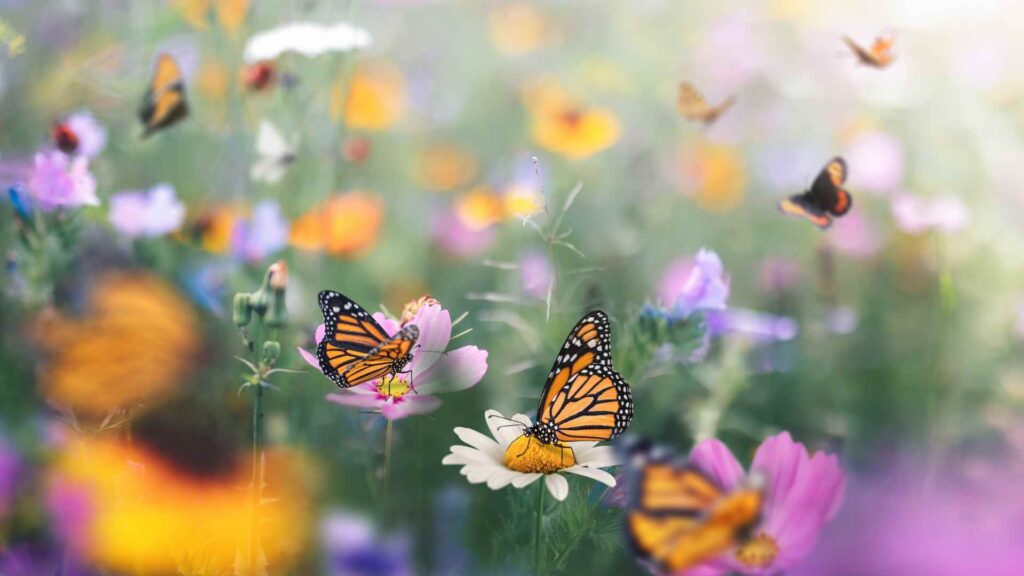
Maintaining Your Butterfly Garden
Regular Garden Maintenance
Keeping your butterfly garden healthy and attractive requires regular maintenance. Involve your kids in these simple tasks to teach them responsibility and care for nature.
- Weeding: Regularly remove weeds that compete with your plants for nutrients and space.
- Tips for Kids: Give them small hand tools and show them how to identify and pull weeds correctly.
- Pruning: Trim back overgrown plants to encourage new growth and maintain a tidy appearance.
- Tips for Kids: Let them use safety scissors or small pruning shears under supervision to trim smaller plants.
- Deadheading: Remove spent flowers to promote continuous blooming.
- Tips for Kids: Show them how to pinch off dead flowers and explain how it helps the plants produce more blooms.
Pest Management
Keeping pests under control without harming butterflies or other beneficial insects is crucial. Here are some natural pest management techniques:
- Hand-Picking: Manually remove larger pests like caterpillars and beetles.
- Tips for Kids: Provide gloves and a jar to collect pests for relocation.
- Beneficial Insects: Introduce ladybugs, lacewings, and other beneficial insects that prey on common garden pests.
- Tips for Kids: Explain the role of these “good bugs” and how they help keep the garden healthy.
- Natural Sprays: Use homemade sprays made from ingredients like garlic, neem oil, or soap to deter pests.
- Tips for Kids: Teach them how to mix and apply these sprays safely.
Seasonal Care and Preparations
Your butterfly garden will need different care throughout the year. Here’s how to prepare for each season:
- Spring:
- Clean up any winter debris.
- Add compost or organic fertilizers to the soil.
- Plant new host and nectar plants.
- Summer:
- Mulch to retain moisture and keep roots cool.
- Water regularly, especially during dry spells.
- Keep an eye out for pests and diseases.
- Fall:
- Cut back perennials after the first frost.
- Collect seeds from annuals for next year’s planting.
- Add a layer of mulch to protect plants over the winter.
- Winter:
- Leave some garden debris as shelter for overwintering insects.
- Plan and order seeds for the next growing season.
- Maintain water sources to prevent freezing.
Involving Kids in Seasonal Tasks:
- Spring: Have them help with planting and preparing the soil.
- Summer: Assign watering duties and teach them about the importance of hydration for plants.
- Fall: Let them collect seeds and learn about plant life cycles.
- Winter: Involve them in garden planning and creating DIY projects like bird feeders.
By incorporating regular maintenance, natural pest management, and seasonal care into your routine, you’ll ensure your butterfly garden remains a vibrant, thriving habitat year-round.
These tasks also provide ongoing learning opportunities and foster a sense of responsibility and connection to nature in your children.
Expanding Your Butterfly Garden
Adding More Plants and Features
As your butterfly garden matures, consider expanding it with more plants and features to attract a wider variety of butterflies and enhance the overall beauty.
- Plant Variety: Introduce new host and nectar plants to attract different butterfly species.
- Suggestions:
- Host Plants: Parsley, fennel, and violets.
- Nectar Plants: Joe-Pye weed, phlox, and cosmos.
- Suggestions:
- Additional Features:
- Rock Piles: Create small rock piles as basking spots for butterflies.
- Logs and Branches: Add logs or branches for natural perches and shelters.
- Additional Water Sources: Add more puddling stations or birdbaths to provide ample water.
Involving Kids:
- Let them pick out new plants and help with planting.
- Encourage them to design new garden areas and create sketches of their ideas.
- Teach them about the different butterfly species attracted by the new plants.
Creating Butterfly Gardens in Containers
If you have limited space or want to add butterfly-friendly areas to patios or balconies, container gardening is an excellent option.
- Choosing Containers: Select pots and containers with good drainage. Consider using a mix of sizes and styles for visual interest.
- Soil and Planting: Use high-quality potting soil mixed with compost. Plant a combination of host and nectar plants in each container.
- Maintenance: Ensure containers are watered regularly, as they dry out faster than garden beds. Fertilize periodically with organic fertilizers.
Container Gardening Projects with Kids:
- Let them decorate the pots with paint or stickers.
- Involve them in choosing and planting the container plants.
- Teach them about the specific care needs of container gardens.
Participating in Community Butterfly Garden Projects
Joining community projects can extend your butterfly garden’s impact and provide social and educational benefits.
- Local Gardens: Look for local parks, schools, or community centers with butterfly garden projects. Volunteer as a family to help with planting and maintenance.
- Workshops and Events: Attend workshops and events focused on butterfly gardening and conservation.
- Sharing Knowledge: Encourage your kids to share what they’ve learned about butterfly gardening with friends and neighbors.
Benefits for Kids:
- Learning about community involvement and teamwork.
- Gaining new skills and knowledge from experts.
- Building friendships with other children interested in nature.
Encouraging Friends and Family to Create Their Own Gardens
Inspire others to create their own butterfly gardens by sharing your experiences and successes.
- Host Garden Tours: Invite friends and family to tour your butterfly garden. Share tips and advice on starting their own.
- Share Plants and Seeds: Give away seeds or plants from your garden to help others get started.
- Use Social Media: Share photos, progress updates, and educational posts about your butterfly garden on social media.
Kids as Ambassadors:
- Encourage your children to talk about the butterfly garden at school or with friends.
- Help them create presentations or posters about butterfly gardening to share with their class.
By expanding your butterfly garden, engaging in container gardening, participating in community projects, and encouraging others to start their own gardens, you’ll create a larger network of butterfly-friendly spaces.
This not only supports butterfly populations but also spreads awareness and appreciation for these beautiful creatures and their habitats.
